
Kids unknowingly targeted with AI abuse apps, images
Children are being routinely targeted with AI-powered technology that allow users to generate sexual images of them from online photos, prompting a push for urgent legal changes.
These technologies, which allow users to insert a person’s photos and use generative artificial intelligence to sexualise them and create child abuse material, are proliferating.
There has been a 1325 per cent surge in AI-related child sexual exploitation reports, with more than 67,000 made in 2024, according to the US National Centre for Missing and Exploited Children.
Independent MP Kate Chaney has introduced legislation to criminalise a person having access to technology that has the sole purpose of generating child sexual abuse material.
Possessing such technology would carry a prison term of up to 15 years under her bill.
Ms Chaney brought together governmental representatives, law enforcement and child protection advocates at a roundtable at Parliament House on Tuesday to discuss the issue.
Former Australian of the year Grace Tame said offenders were using increasingly sophisticated technology to produce child abuse material, such as AI apps that allow perpetrators to create content en masse.
“The nature of it is worsening because of AI tools that are enabling offenders to make their methods of abuse more sophisticated, as well as make their methods of evading justice more sophisticated,” she told reporters.
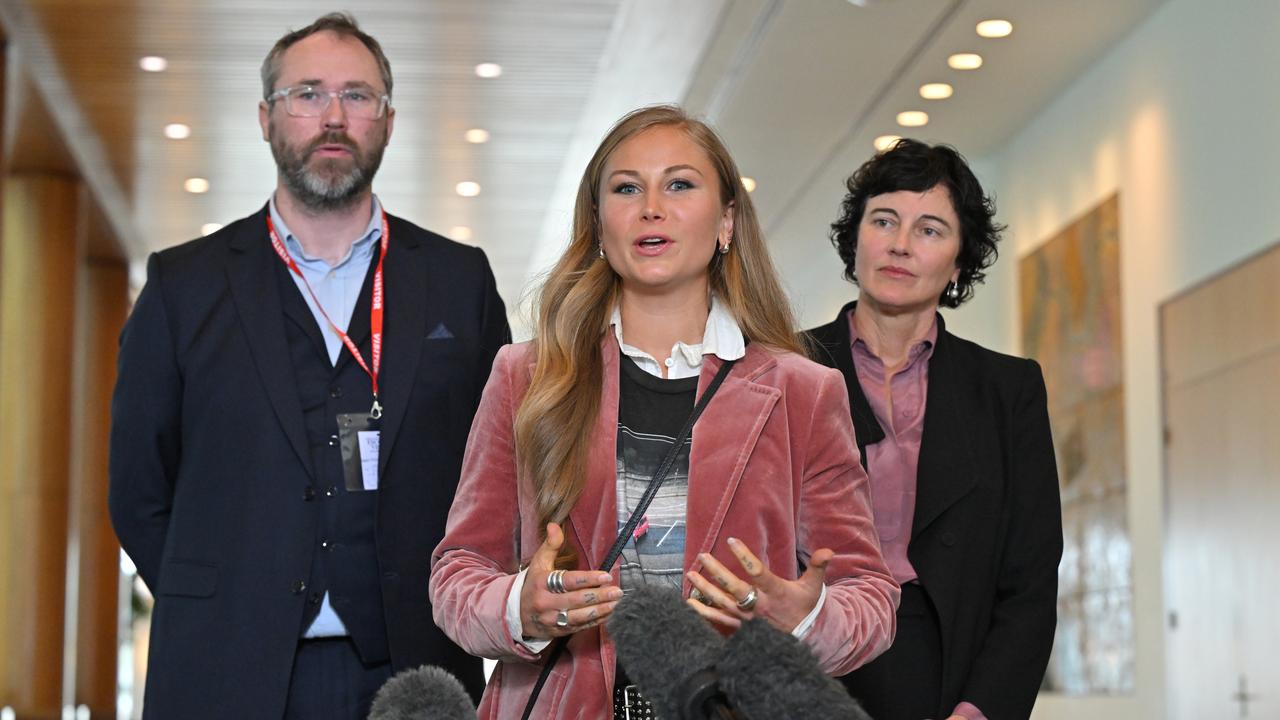
Sarah Napier from the Australian Institute of Criminology, whose research focuses on child exploitation, said she had seen offenders take non-sexual images of kids from social media and turn them into child abuse material.
“So even if a child hasn’t been a contact victim of child sexual abuse, they are still being victimised without their parents knowing, without them knowing, and their photos are circulating around on the internet,” she said.
One in 10 adolescents had been sexually extorted and about 40 per cent of that cohort said it happened using AI-generated material, Dr Napier said while pointing to research from the institute.
“Most of them were sexually extorted under the age of 15 years old and the most common age to be sexually extorted was around 14, 15,” she said.

International Centre for Missing and Exploited Children chief executive Colm Gannon said the technology could already be tracked with systems in place in Australia with the help of universities and researchers.
Open-source AI models are commonly uploaded online, providing people with public access to a back-end they can build on.
Specialised add-ons that enable the generation of child abuse material could be added to open-source models and this was the technology law enforcement would be able to target if it was criminalised, Mr Gannon said.
“Criminal intent is always going to be there but there also has to be criminal responsibility,” he said.
Communications Minister Anika Wells pledged to work with the industry on swift reforms that would be “as tight as possible” to stop people accessing apps that sexualise kids.
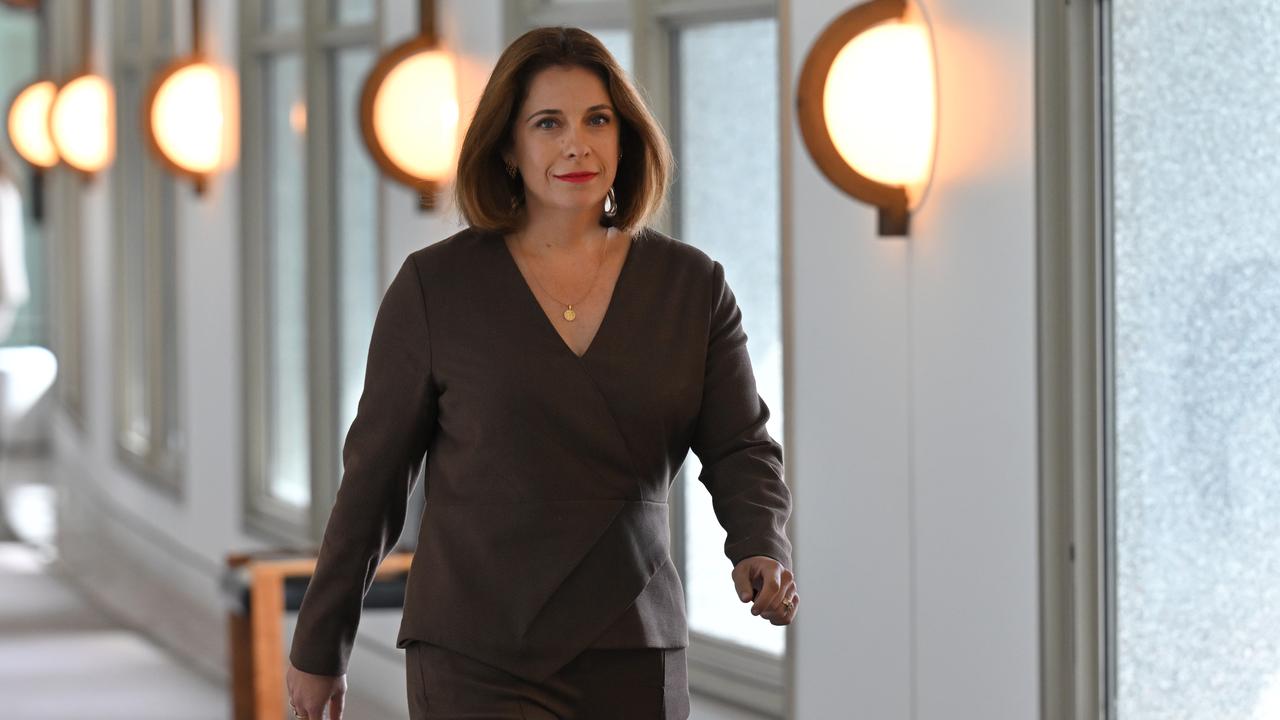
“One child in every classroom in Australia has now been a victim of deep fake imagery,” she said.
“These apps are only designed to abuse, to believe, to humiliate and to harass, and we are determined to restrict them.”
The onus would also be on tech companies to prevent the availability of “nudifying” tools and there would be consequences for failures, Ms Wells added, although she didn’t outline a timeline for reform.
“Maybe the eSafety commissioner could block these apps from being on app stores or websites, maybe we could direct the platforms to take them down or to be responsible for taking them down in the first place,” she said.
1800 RESPECT (1800 737 732)
National Sexual Abuse and Redress Support Service 1800 211 028
Lifeline 13 11 14
Kids Helpline 1800 55 1800 (for people aged 5 to 25)
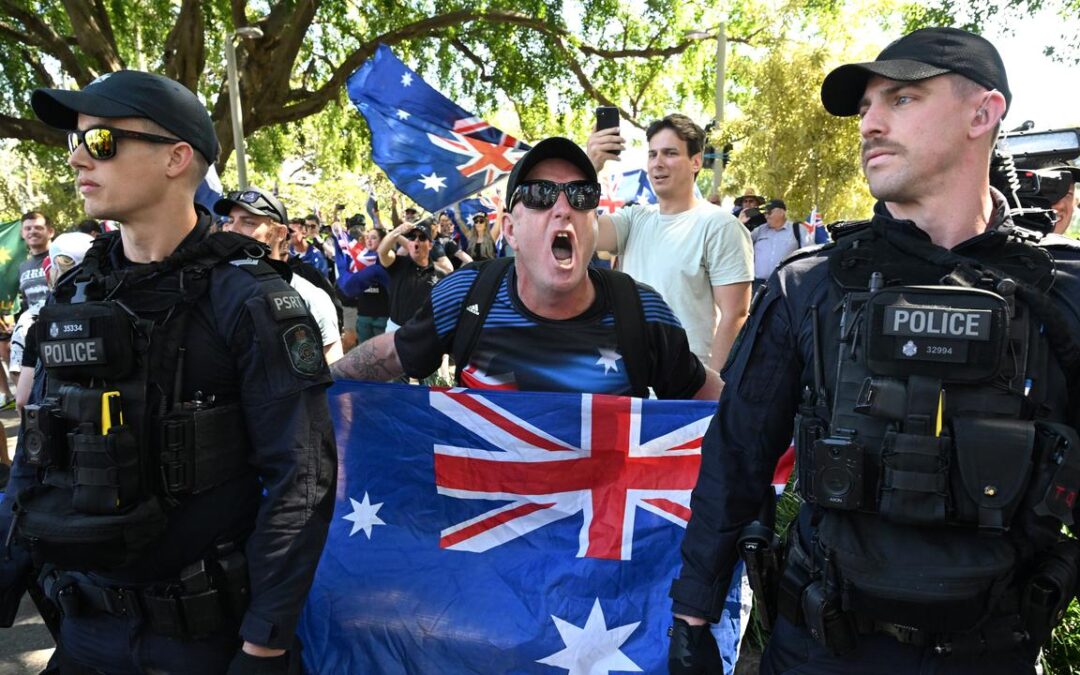
Violent protests fail to sway national migration plans
Violent protests calling for the national migrant intake to be curbed have failed to make an impact, as key immigration figures reveal Australia’s migration numbers will remain at current levels.
The permanent migration program intake for 2025/26 will be set at 185,000 people, the same as the previous financial year.
The announcement of the intake levels follows anti-immigration rallies attended by thousands of protesters in capital cities across Australia on Sunday.
Immigration Minister Tony Burke said the decision to keep migration numbers on hold followed talks with states and territories, with a focus on skilled migration.
Health Minister Mark Butler acknowledged many Australians held legitimate concerns following a spike in immigration numbers post-COVID, saying the government needed to get the balance right on population growth amid housing strains and workforce shortages.
Pandemic-era border closures caused the net overseas migration figure to plummet.
When borders reopened, an influx of international students caused the net increase to surge to a record high of 536,000 in one year.
Numbers had fallen since and Mr Butler said the rate would continue to come down to normal levels.
“I think there is a real tension between recognising that there are real pressures on our housing system and other parts of the economy,” he told Nine’s Today Show on Tuesday.
“While also, I know intimately, recognising we’re really struggling to get the workers we need to deliver the hospital services, the aged care services and build the houses we need.”
Neo-Nazi Thomas Sewell, who addressed the rally in Melbourne and was shown in footage alongside black-shirt clad people attacking an Aboriginal camp, crashed a press conference being held by Victorian Premier Jacinta Allan on Tuesday.
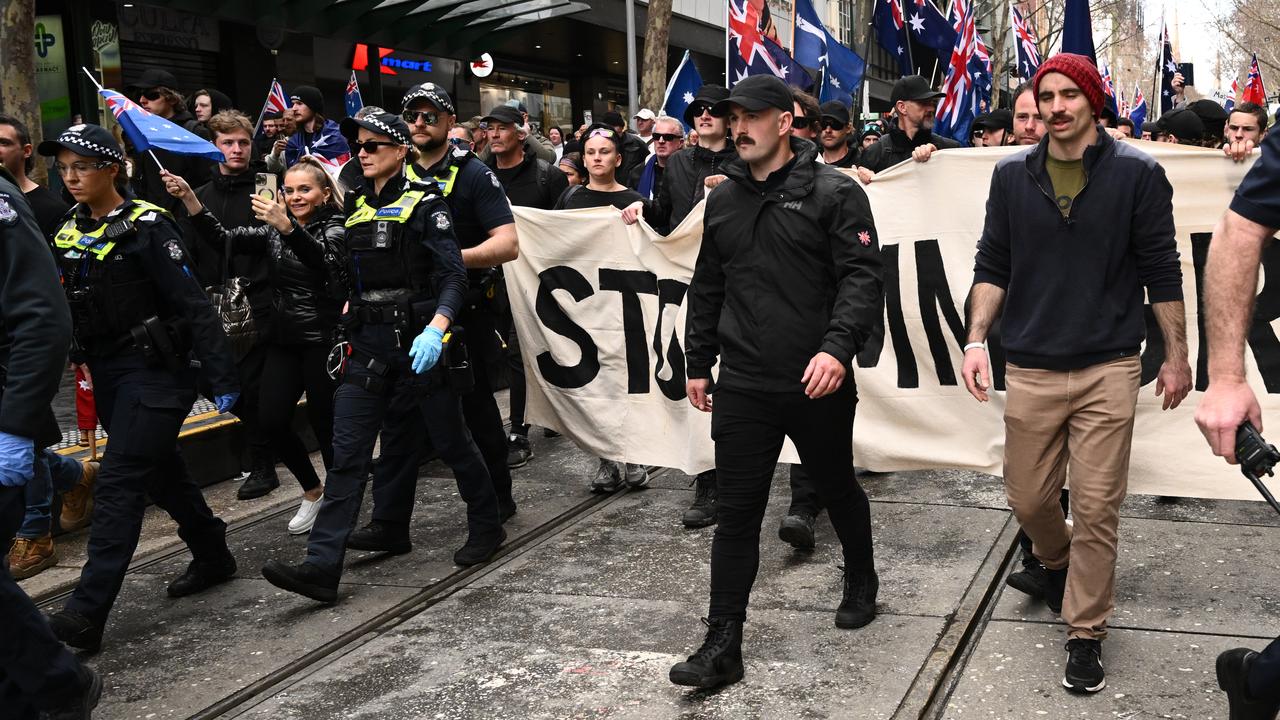
He shouted about Australians being denied the right to protest as he was escorted away by police officers.
Prime Minister Anthony Albanese said the prominence of neo-Nazis at the rallies needed to be confronted.
“We have to make sure we give people space to move away and to not push them further down that rabbit hole,” he told a Labor Party room meeting in Canberra.
“A lot of these fears are being reinforced online and we have challenges with polarisation.”
Independent senator David Pocock and former Immigration Department deputy secretary Abul Rizvi said the government had left a vacuum for unsavoury elements, including neo-Nazis, by failing to show leadership and properly explain its immigration plan to the public.
The rallies have been widely condemned because of the presence of neo-Nazis, but politicians including One Nation senator Pauline Hanson and Queensland MP Bob Katter joined marchers.
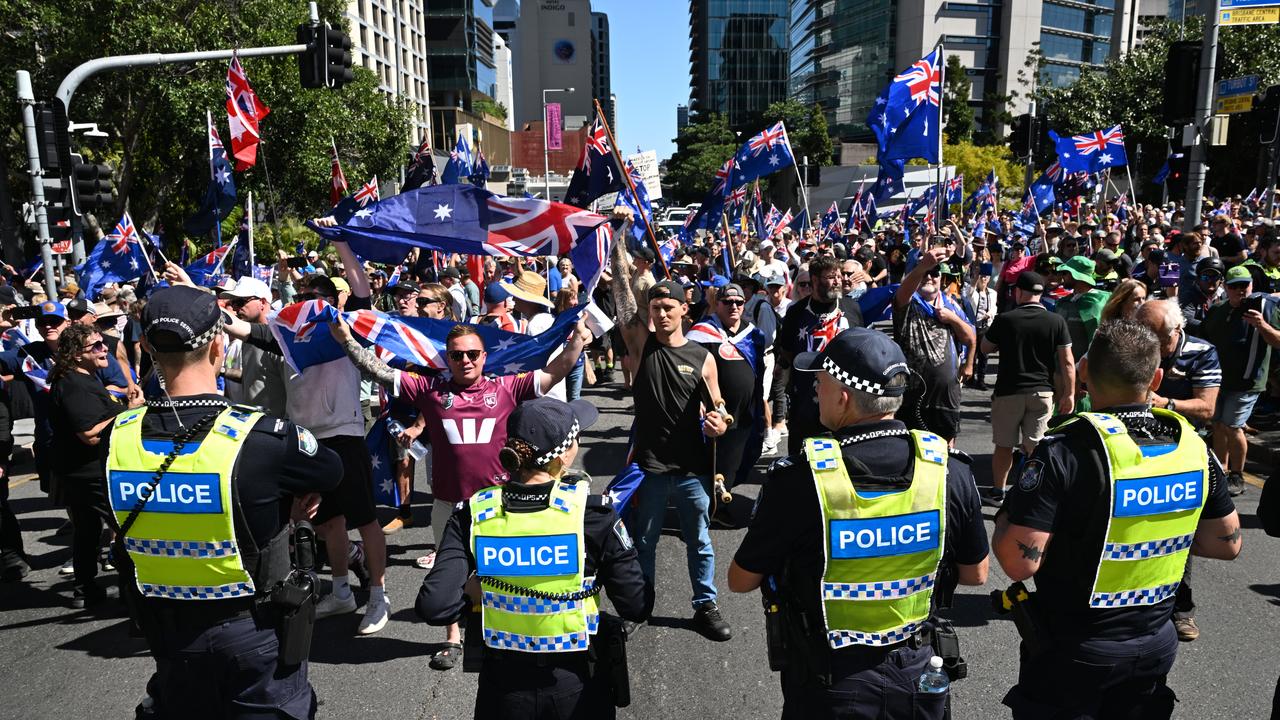
While only a small contingent of the people who showed up identified as white nationalists, terrorism expert Levi West said there was an overlap that extremists could exploit.
“A rally that has a presence from a group like the neo-Nazi organisation presents a prime opportunity for recruitment,” said Dr West, a research fellow at the Australian National University.
“People whose grievances are potentially based in conspiracy theory or misinformation can quite easily be drawn towards the simplicity of the ideas that are embedded in neo-Nazi ideology as providing some sort of solution or solace for the thing that they feel a grievance about.”
Simon Welsh, director of research at pollster Redbridge, said surveys and focus groups were picking up concerns among the general public about the size of Australia’s migration intake, in the context of the housing affordability crisis.
“But there is some important nuance here,” he told Sky News.
“There’s this sensitivity to the idea of politicians using (immigration) as an excuse to not do proper reform on issues like housing or on health and education.”
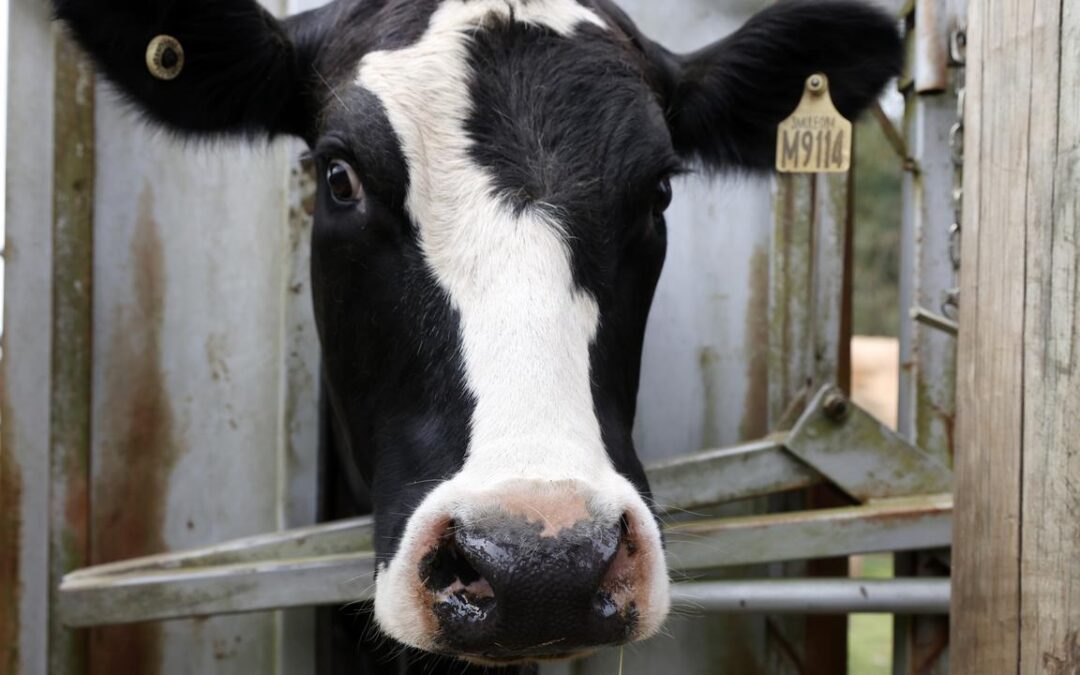
Record forecast for Australia’s world-class agriculture
The price of livestock is set to tick Australia’s agriculture, fisheries and forestry production value to a record of more than $100 billion.
Beef, lamb and milk products have boosted overall agriculture sector production with this financial year’s forecast a good omen for producers around the nation, the federal government’s commodities forecaster says.
However, crop production value is set to fall over the next 12 months following rainfall through July in South Australia and Victoria.
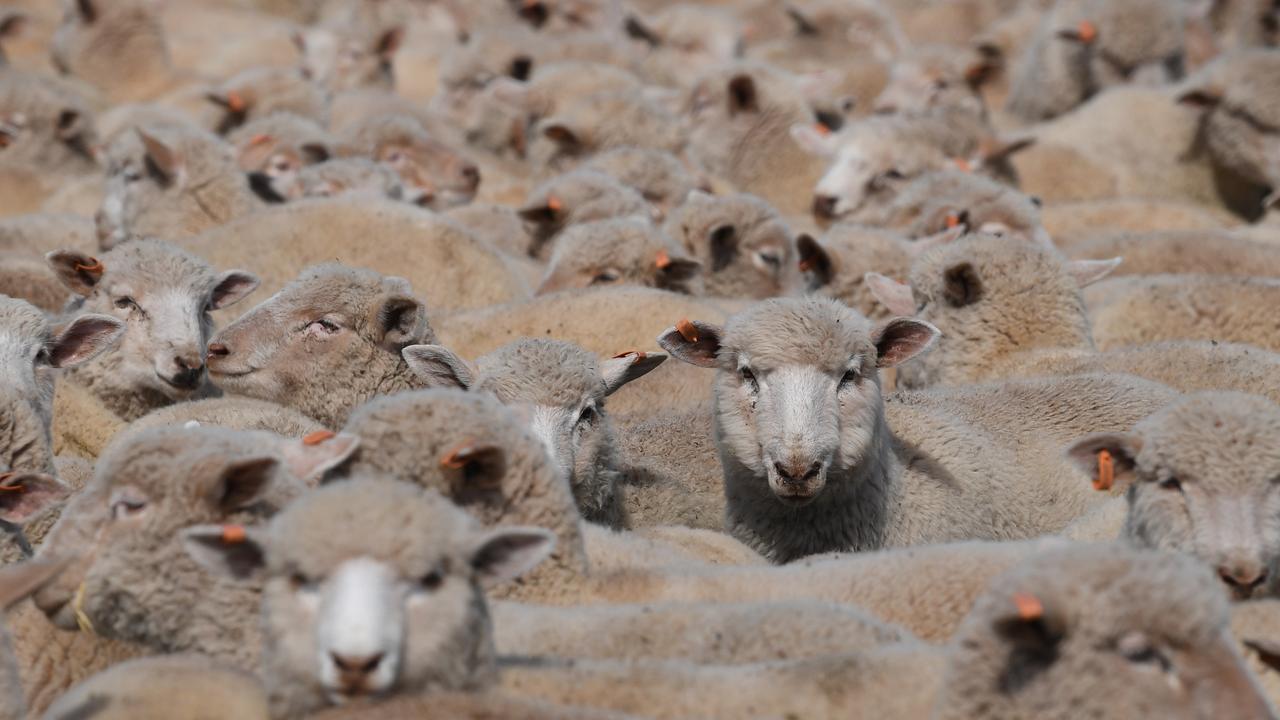
There are also concerns for southern NSW due to a slow start to the winter cropping season and relatively low soil moisture levels.
The Australian Bureau of Agricultural Resource and Economics and Sciences, released its commodities report for the 2025 September quarter on Tuesday.
It shows livestock and livestock product values will rise due to “robust” global demand and re-stocker activity driving higher prices.
The bureau’s executive director said the new record value was mostly down to livestock.
“We’ve seen high prices lately for both livestock and animal products, like beef, lamb and milk,” Jared Greenville said.
“This has boosted the value of livestock production to $41.6 billion, helping to drive overall agriculture sector production value to a forecasted $94.7 billion, which would also be a record.”
Australia’s gross gross agricultural production is forecast to rise by $685 million in the financial year.
Livestock and livestock product values are forecast to rise by $1.1 billion in 2025–26.
Lamb and sheep slaughter are up $500 million, milk $400 million and cattle $200 million.
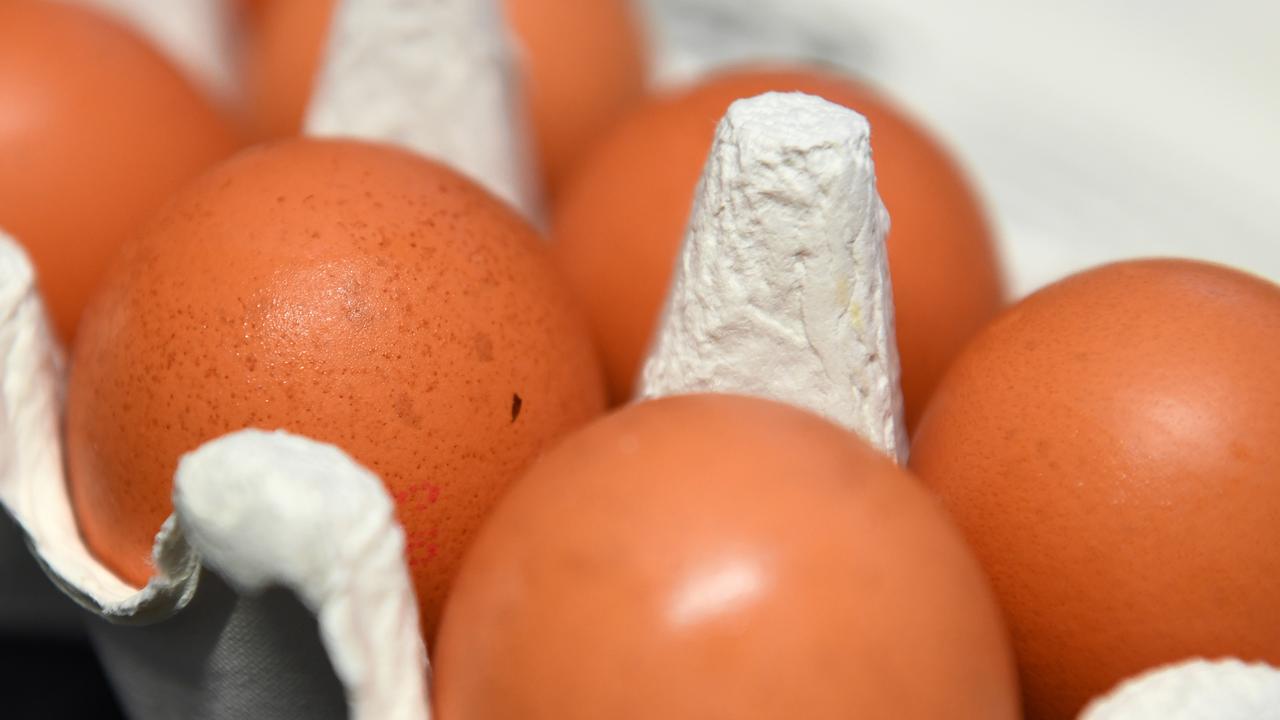
Pigs, poultry slaughtering and egg production have risen by $200 million as rising domestic production volumes “more than compensate for slightly lower prices for poultry meat”, the report said.
But on the flip side, total crop production value will decline year-on-year, with lower domestic prices more than offsetting a small rise in output volume.
“While declining somewhat from 2024–25, if realised, the forecast value of crop production would be the third highest on record,” the report said.
“Favourable seasonal conditions in winter, combined with a positive spring outlook, will support strong production volumes.”
Agriculture, Fisheries and Forestry Minister Julie Collins said the record result stems from the hard work, resilience and skill of farmers working collaboratively with government.
“The continued growth in our agriculture, fisheries and forestry sector is good for our farmers, it’s good for our regional economies, and it’s good for our trade relationships,” Ms Collins said.
“This record forecast is not only a result of increased demand for our world-class products, but what you can achieve when government works with industry to deliver for them.”
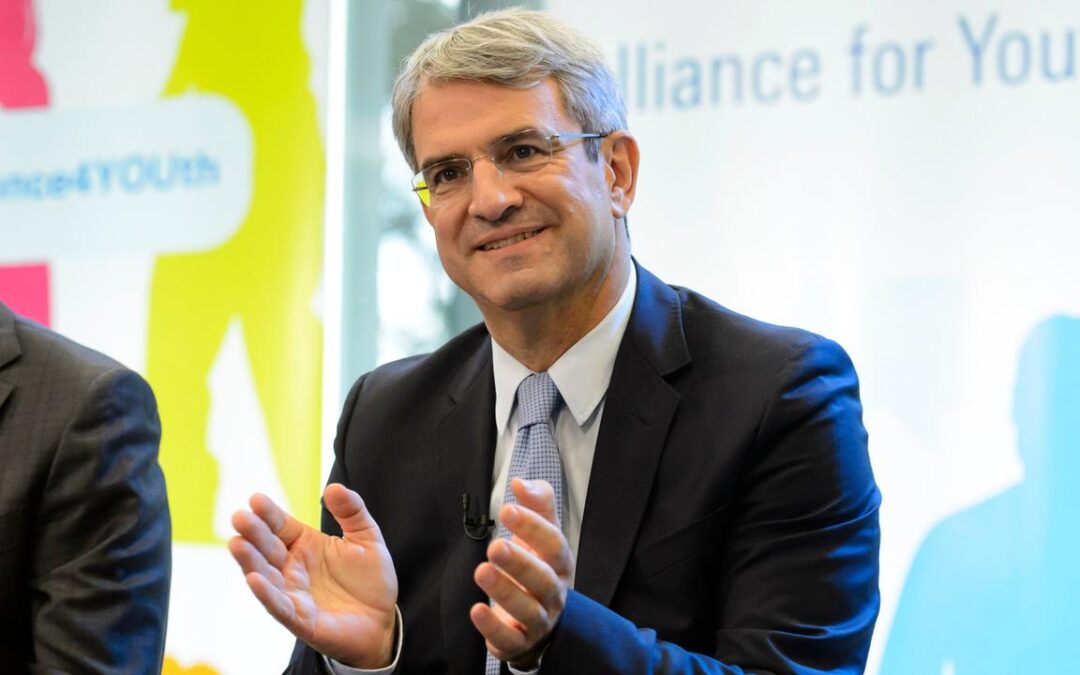
Nestle fires CEO after relationship with employee
Swiss food giant Nestle has dismissed its chief executive Laurent Freixe after an investigation into an undisclosed relationship with an employee.
The maker of Nescafe drinks and Purina pet food said in a statement the dismissal was effective immediately.
An investigation found the undisclosed romantic relationship with an employee violated Nestle’s code of conduct.
Freixe, who had been chief executive for a year, will be replaced by Philipp Navratil, a long-time Nestle executive.
“This was a necessary decision,” said chairman Paul Bulcke.
“Nestle’s values and governance are strong foundations of our company.”
The company did not give any other details about the investigation.
Freixe had been with Nestle since 1986, holding roles around the world.
When the company revamped its geographic structure in January 2022, Freixe became chief executive of Zone Latin America.
In August 2024, he was tapped to replace then-chief executive Mark Schneider in the top role, and started September 1, 2024.
Navratil started his career with Nestle in 2001 as an internal auditor and served in a variety of roles in Central America.
In 2020, he joined Nestle’s Coffee Strategic Business Unit, and in 2024, he became chief executive of Nestle’s Nespresso division.
It is the latest in a string of personnel changes for the company.
In June, Bulcke, a former chief executive who has been chairman of the board since 2017, said he would not stand for re-election in 2026.
In April, Steve Presley, an executive vice president and chief executive of Zone Americas, said he was retiring after almost 30 years of service.
Based in Vevey, Switzerland, Nestle has been facing headwinds like other food makers, including rising commodity costs and the negative impact of US tariffs.
It said in July it offset higher coffee and cocoa-related costs with price increases.
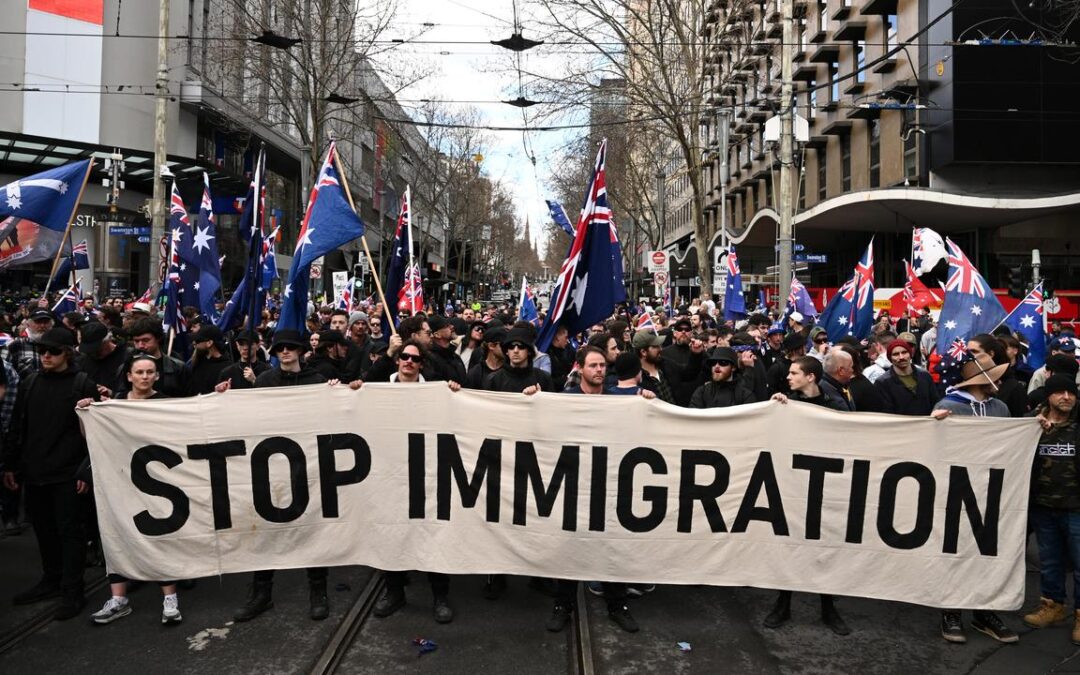
Anti-migrant rallies ‘prime’ time to recruit neo-Nazis
Anti-immigration rallies attended by thousands of Australians are opportunities for neo-Nazi groups to enlist more members, experts say, as Anthony Albanese calls for vigilance against extremism.
Thousands of people turned out across the country at the weekend as protesters were met with counter-demonstrations in Sydney and Melbourne.
The rallies have been widely condemned because of the presence of neo-Nazis, but politicians including One Nation senator Pauline Hanson and Queensland MP Bob Katter joined marchers.
While only a small contingent of the people who showed up identified as white nationalists, terrorism expert Levi West said there was an overlap that extremists could exploit.
“A rally that has a presence from a group like the neo-Nazi organisation presents a prime opportunity for recruitment,” said Dr West, a research fellow at the Australian National University.
“People whose grievances are potentially based in conspiracy theory or misinformation can quite easily be drawn towards the simplicity of the ideas that are embedded in neo-Nazi ideology as providing some sort of solution or solace for the thing that they feel a grievance about.”
Mr Albanese said while there would have been “good people” who attended the rallies to express their views, the protests were about sowing division.
“What we have here is neo-Nazis being given a platform,” he told ABC News on Monday.
“The tone, of course, of much of the rallies was unfortunate – is the best way that you could put it – but hateful in some of the extreme examples.”
Asked if resentment towards migrants was rising, Mr Albanese said those elements had always been present.
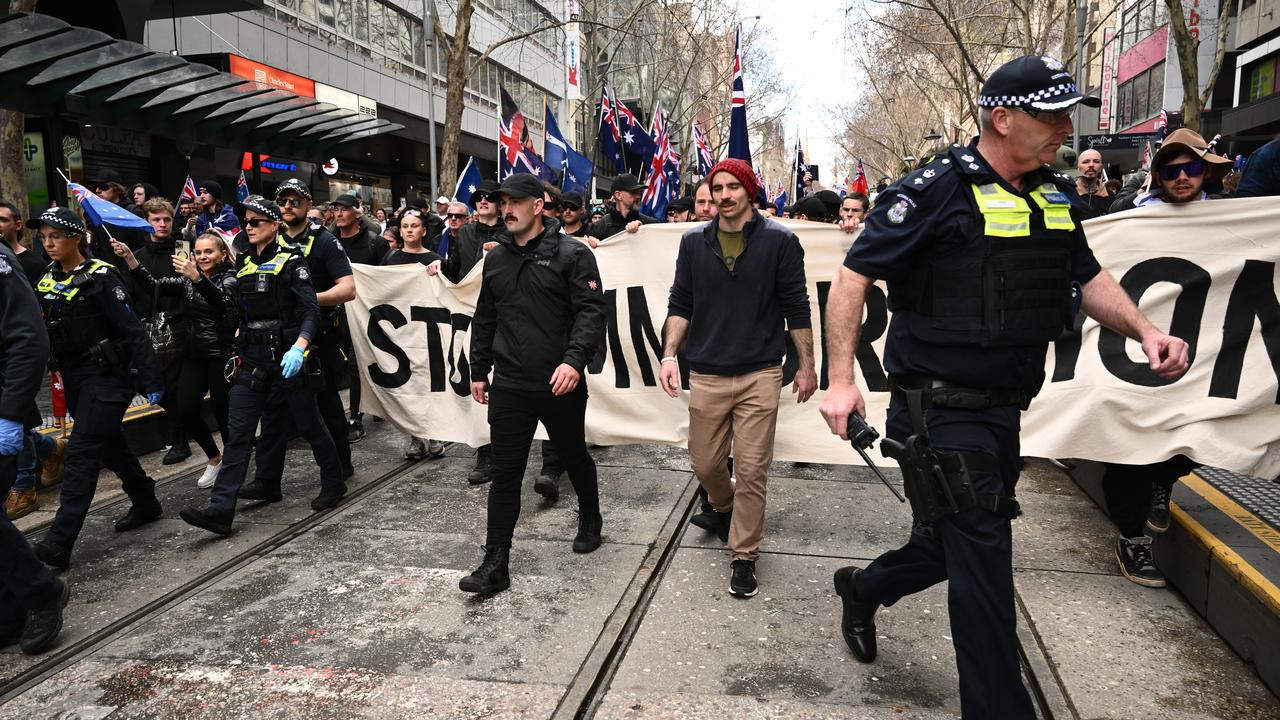
“What we need to do is to be vigilant about it,” he said.
“It’s much easier to organise through social media … for people to have their views reinforced, often … based upon things which aren’t just fact.”
Opposition Leader Sussan Ley said the weekend rallies had been “hijacked by violent neo-Nazis spouting hate and racism”.
“Extremism has no place in Australia,” she said.
Ms Ley said the coalition was ready to work with the government to repair social cohesion in the community.
Opposition multicultural affairs spokesman Paul Scarr said the coalition supported sustainable levels of migration, but the debate about the issue needed to be “terribly careful”.
“If we don’t have these debates in a considered and measured way, then unfortunately, the extremists will use the lack of debate and discussion to obtain a foothold in the debate, and that’s something we really need to guard against,” he told ABC Radio on Monday.
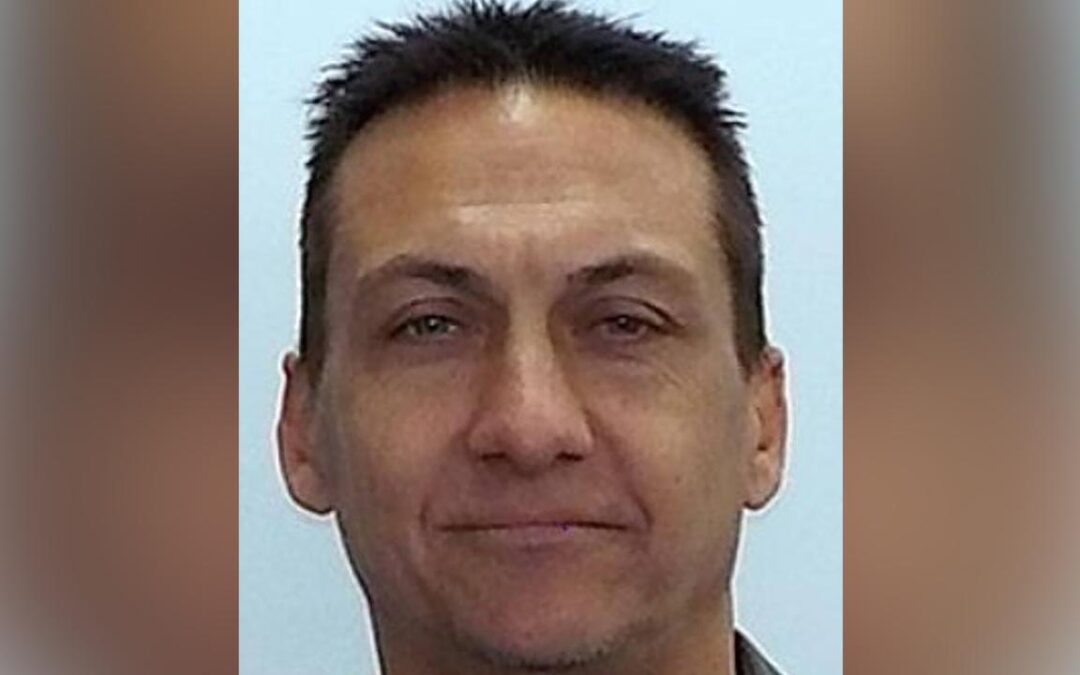
Hi-tech search for accused cop-killer hits second week
High-tech equipment used in the search for an accused police killer could prove useless depending on his hiding place, as investigators believe people know his location.
Dezi Freeman has been on the run since last Tuesday following deadly violence at his property in Porepunkah, about 300km northeast of Melbourne, with no confirmed sightings of him since.
The 56-year-old is accused of killing Detective Leading Senior Constable Neal Thompson, 59, and Senior Constable Vadim De Waart, 35, while they were serving him with a warrant.
More than 400 police are searching for him on foot and in the air in Victoria’s high country, with people urged not to approach him because he might be armed.
Experienced drone search and rescue operator Michael Coates said the police helicopter would have infrared and thermal cameras that detect heat through dense bushland, but warned even the most advanced technology had its limits.
“If the person is in a cave or a rock ledge or in a mine shaft and they’ve got no visible presence to the sky, then they basically remain unrecognised as there is no way of seeing through the ground,” the C-Astral Aerospace Australia operations officer told AAP.
“If he was just out sitting under a tree somewhere, they would have found him many, many days ago.
“He’s obviously found shelter or he’s evaded everything and he’s out of the area.”
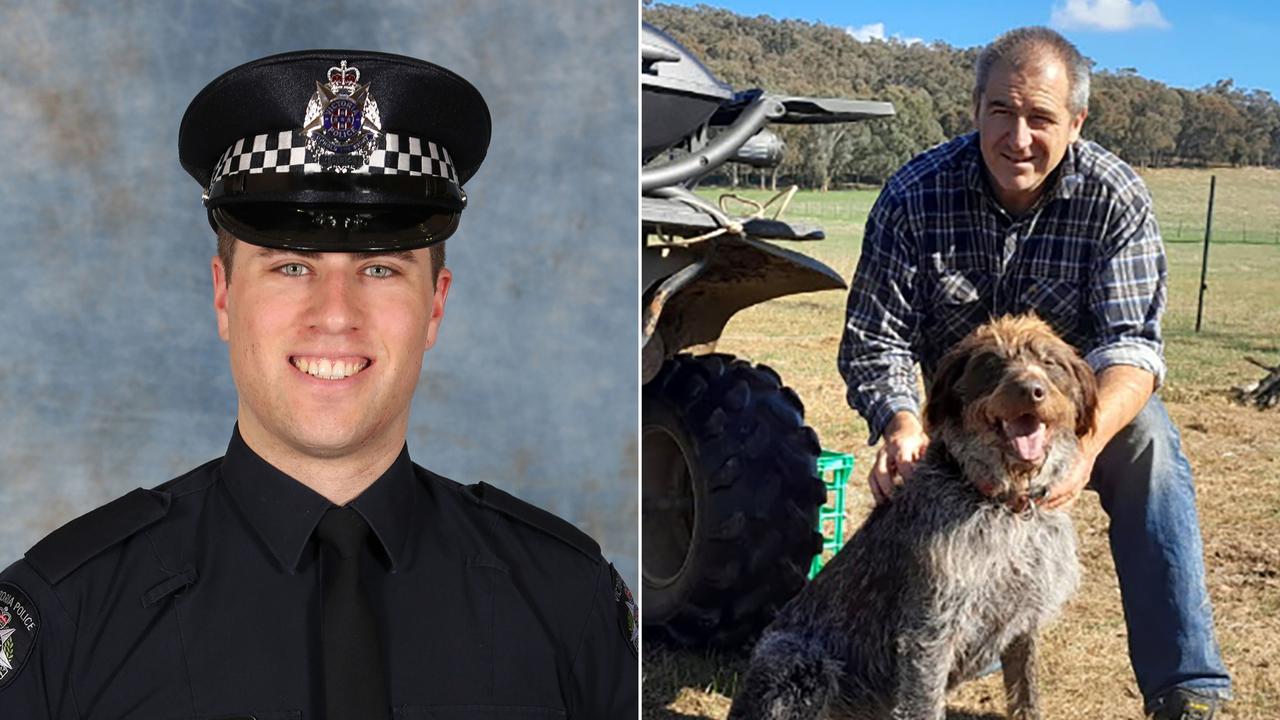
Victoria Police Superintendent Brett Kahan said the force believed people know the whereabouts of Freeman.
“People have chosen, for whatever reason, not to come forward, and I’m taking this time to appeal to you to come forward in that respect,” he told reporters on Monday.
Supt Kahan said he couldn’t confirm whether Freeman’s wife Amalia would be charged after she was arrested along with the couple’s 15-year-old son at a Porepunkah home last week.
“It’s two different things to be speaking with police and co-operating with police,” he said in reference to Ms Freeman.
Funeral arrangements for the slain officers have been finalised.
Snr Const De Waart will be farewelled on Friday, followed by the funeral for Det Snr Const Thompson on September 8.
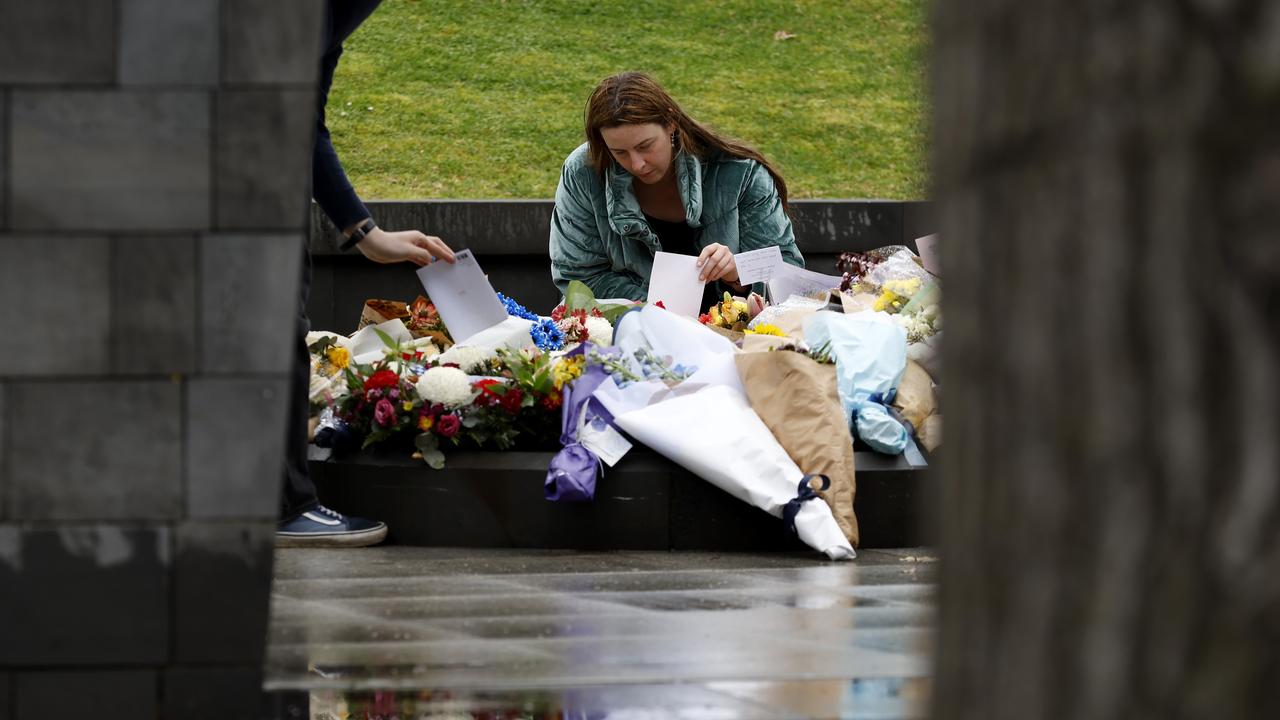
Mr Coates said Freeman may have previously stored food and water near his home, but his survival would be hampered by his efforts to stay hidden, with police likely planting motion-sensitive trail cameras in the area.
“Normally you’d light a fire to keep warm. He obviously can’t do that because the fire would show to thermal cameras like a beacon on top of the Harbor Bridge and the smoke would give him away,” he said.
“He needs three things – shelter, food and water.
“If he’s got those three things, it’s not going to be comfortable, but he’s going to be able to survive for an extended period of time”.
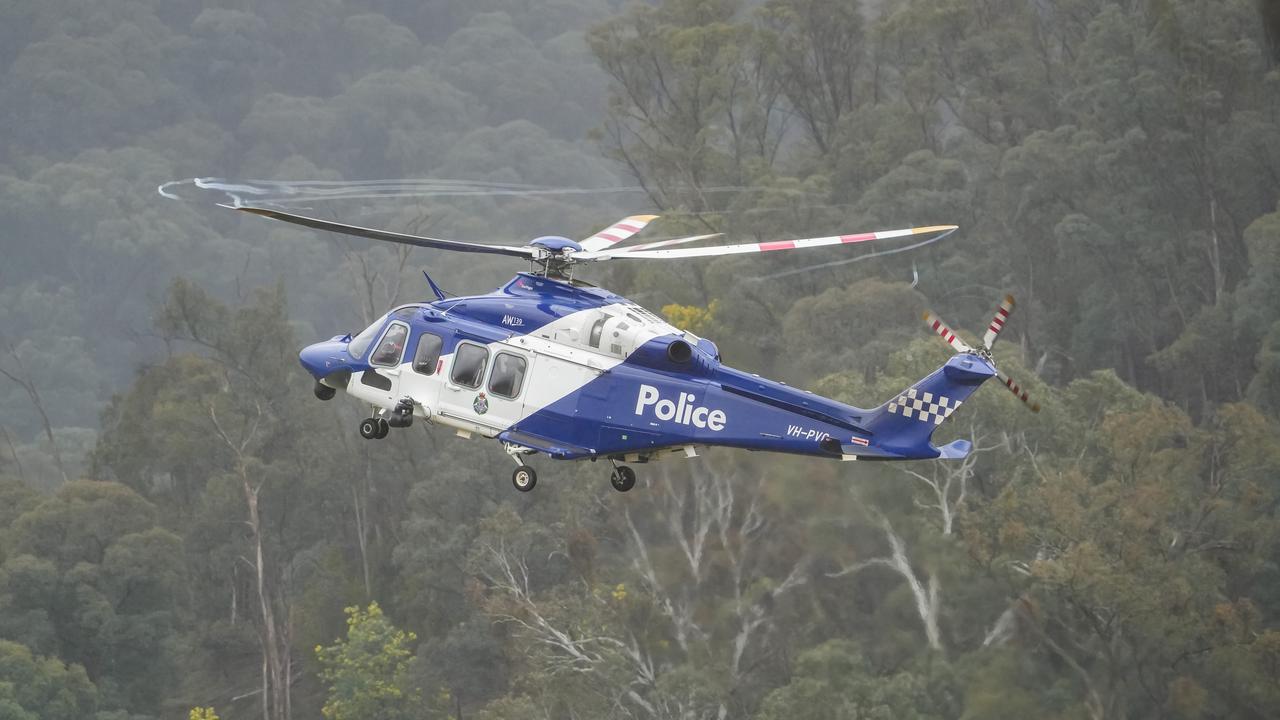
Multiple wanted fugitives have survived for years on the run, including New Zealand man Tom Phillips who disappeared with his three children in December 2021.
Last week, local police put out a fresh appeal for information after a masked man believed to be Philips was accused over a shop robbery in the nation’s north.
Closer to home, father-and-son Gino and Mark Stocco were wanted for eight years, while double murderer Malcolm Naden survived seven years on the run by raiding homes near bushland before he was caught in 2012.
Mr Coates thought it unlikely Freeman could survive under the radar for that long because of technological developments.
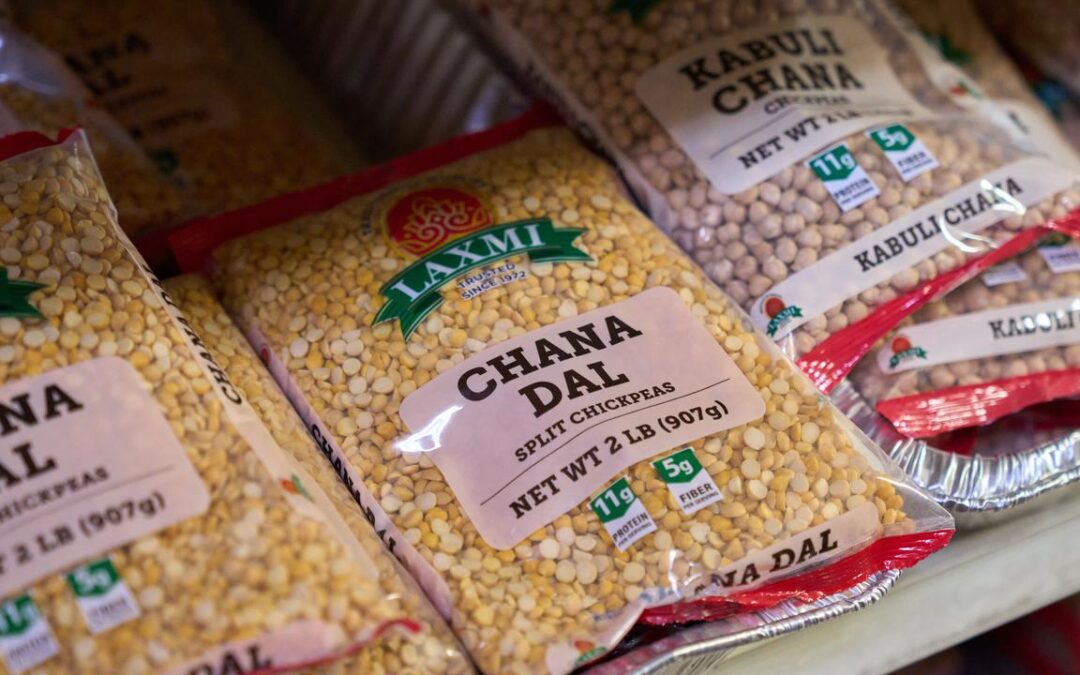
Trump says India offered zero tariffs on US goods
US President Donald Trump says India has offered to reduce its tariffs on US goods to zero, even as Indian Prime Minister Narendra Modi was making public shows of solidarity with Chinese and Russian leaders in the face of trade pressure from Washington.
While calling the US relationship with India “one-sided,” Trump wrote on his Truth Social platform on Monday: “They have now offered to cut their Tariffs to nothing, but it’s getting late. They should have done so years ago.”
The Indian Embassy in Washington did not immediately respond to Trump’s comments, which follow the implementation of total duties as high as 50 per cent on Indian goods that have raised questions about the future of the US-India relationship.
Trump’s remark came as Modi was in China for a summit of more than 20 leaders of non-Western countries of the Shanghai Cooperation Organisation, a China-backed initiative given renewed impetus by Trump’s global tariff offensive.
At the summit, Chinese President Xi Jinping pressed his vision for a new global security and economic order that prioritises the “Global South”, in a direct challenge to the US.
The US-India relationship has strengthened in recent years, including during Trump’s first term, given shared concerns about China’s growing power, but Trump threatened the tariffs on India after it refused to stop buying Russian oil in defiance of his efforts to end Moscow’s war in Ukraine.
In China, in an image designed to convey solidarity, Putin and Modi were shown holding hands as they walked jovially toward Xi before the summit opened.
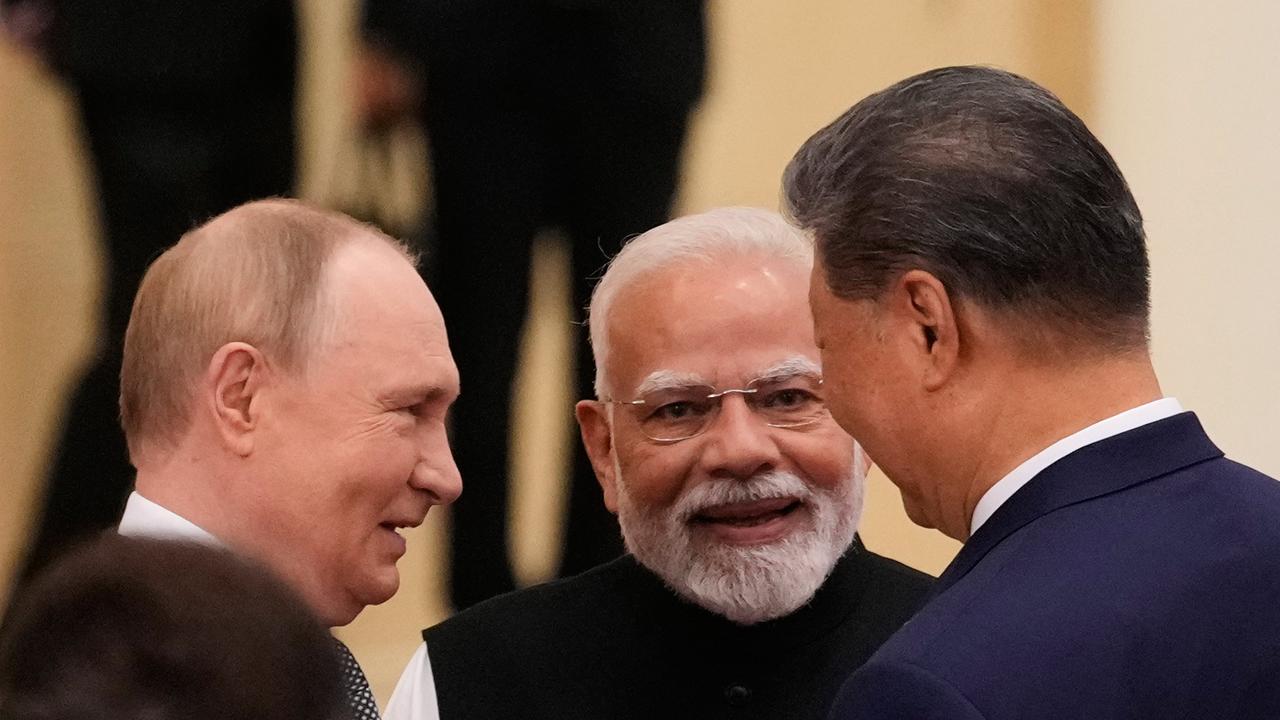
The three men stood shoulder-to-shoulder, laughing and surrounded by interpreters.
Beijing has used the summit to mend ties with New Delhi. Modi, visiting China for the first time in seven years, and Xi agreed on Sunday their countries are development partners, not rivals, and discussed ways to improve trade.
The US State Department and White House did not immediately respond to requests for comment on the meetings in China.
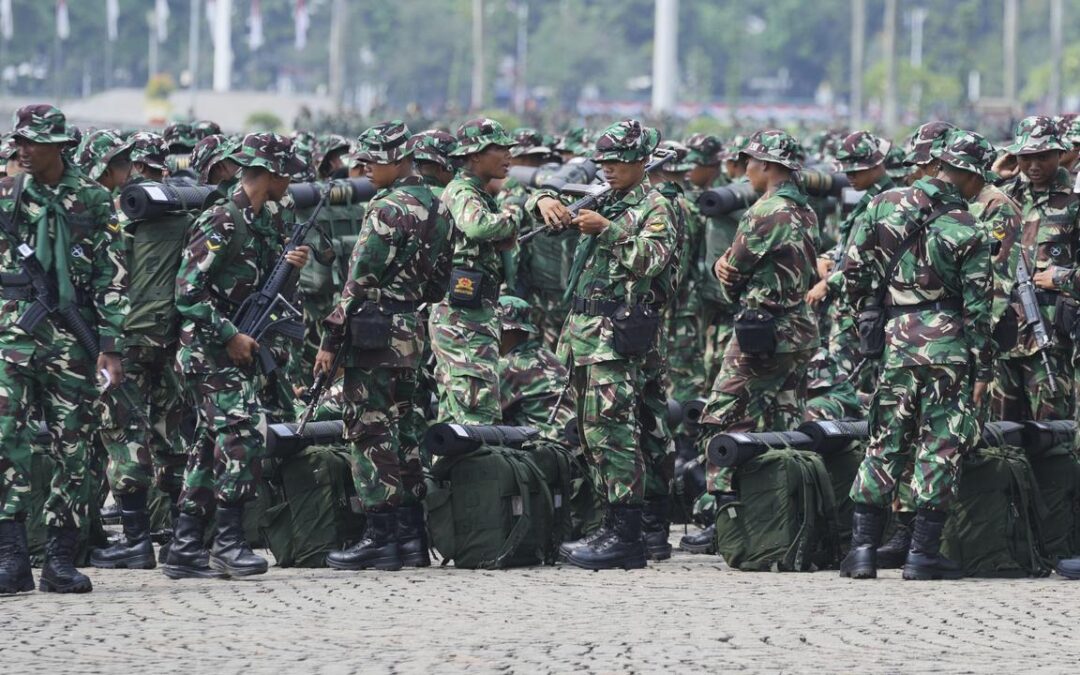
Defiant Indonesian students gather for protests
Hundreds of students have gathered in major Indonesian cities, defying fears of a crackdown on protests after deadly riots on the weekend left eight dead in the worst violence in the Southeast Asian nation in more than two decades.
Protests began a week ago against the government’s spending priorities, such as enhanced perks for lawmakers, and escalated into rioting and looting after a police vehicle hit and killed a motorcycle taxi driver.
The homes of political party members, including the finance minister, were looted and state buildings ransacked or set ablaze, in the biggest challenge to President Prabowo Subianto’s government since he took office nearly a year ago.
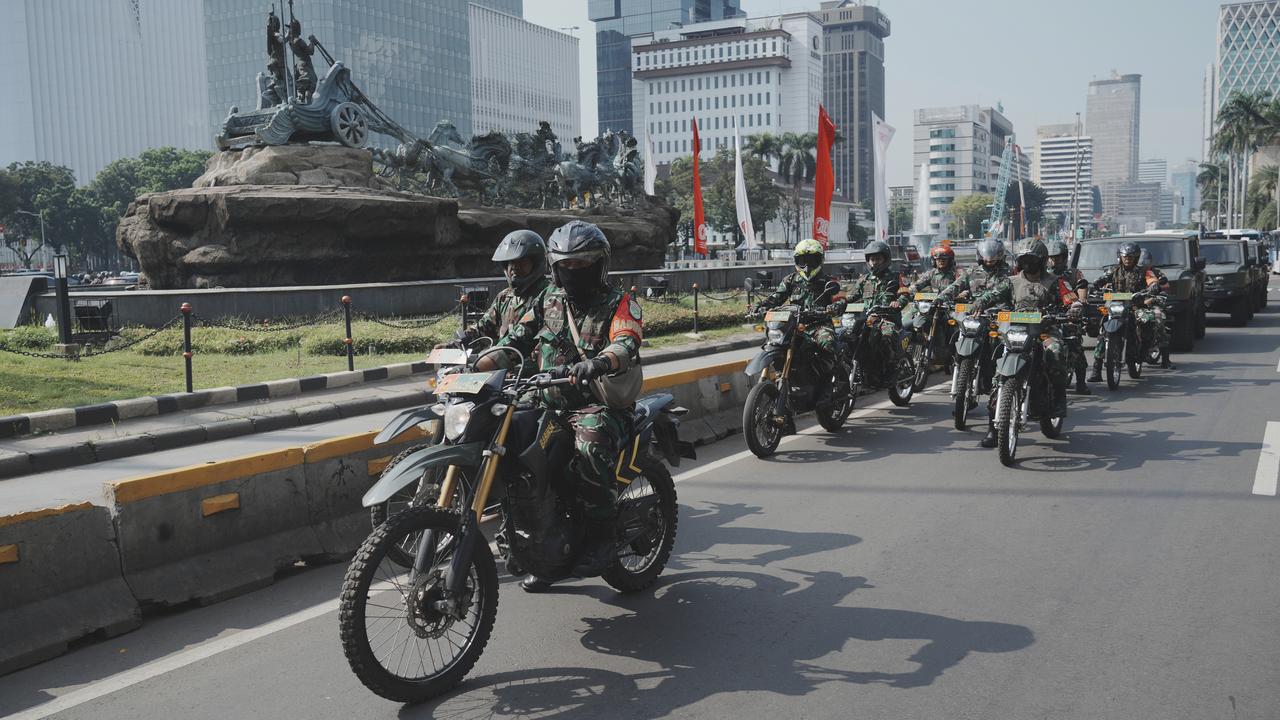
On Sunday, Prabowo announced a cut in lawmakers’ perks – a major concession to protesters – but warned security forces would act firmly to control law and order.
The heavy presence of military-led security led some organisers to postpone gatherings in the capital, Jakarta.
However, groups of student protesters gathered in Jakarta on Monday as well as in Indonesia’s cultural hub of Yogyakarta, and in the city of Makassar, the site of the weekend’s worst violence, in which at least four people were killed in arson and mob violence.
The Makassar gathering was close to the local parliamentary building that was burned to the ground on Friday.
“The President’s statement yesterday did not accommodate demands from students and civil society,” said the leader of a student group from Makassar State University.
The leader, Syamry, who only goes by one name, said students also had other, deeper demands, such as comprehensive reform in the police.
The protests and violence have unsettled financial markets, with the stock market falling more than three per cent in opening trades on Monday, before recovering some ground.
Earlier, students and civil society groups had called off protests in Jakarta. More than 1200 protesters had been detained there, the city’s police chief said.
The Alliance of Indonesian Women, a coalition of women-led civil society groups, said it had delayed planned protests at the parliament to avoid any crackdown by authorities.
“The delay is done to avoid increased violent escalation by authorities … the delay takes place until the situations calm down,” the group said in an Instagram post on Sunday.
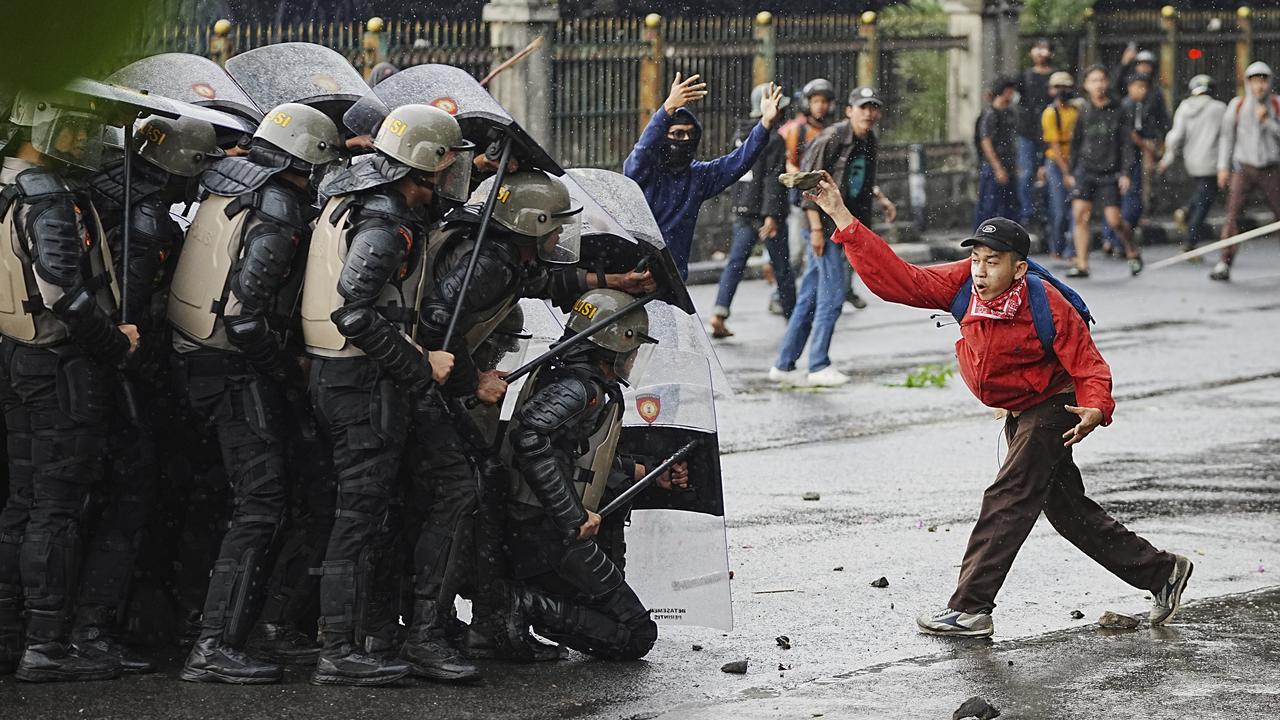
Student groups also delayed a protest on Monday, with one umbrella group saying the decision was “due to very impossible conditions”.
Army patrols could be seen on the main roads of Jakarta. Traffic was thin with many businesses allowing work from home and schools holding classes online.
Social media posts from some groups warned of fake protest calls, and urged people to be cautious.
Finance Minister Sri Mulyani Indrawati confirmed in an Instagram post she was a victim of the looters. She called on people not to loot, and apologised for the government’s shortcomings.
More than 700 people were injured, with infrastructure damages worth $US3.4 million ($A5.2 million) recorded from last week’s protests in Jakarta, the capital’s governor Pramono Anung said.
Eight people have died in the protests, chief economic minister Airlangga Hartarto said on Monday. Hartarto said the economy was fundamentally solid and would get a boost from a planned incentive package.
Ratings agency S&P said in a note on Indonesia on Monday the protests are unlikely to escalate to a degree that will undermine political stability, even as it warned of policy adjustments that add fiscal burden.
“One potential result is an increase on social spending to boost support for middle- and lower-income groups,” the note read.
“That in turn could lead to a higher fiscal deficit of close to the legal limit of three per cent of GDP.”
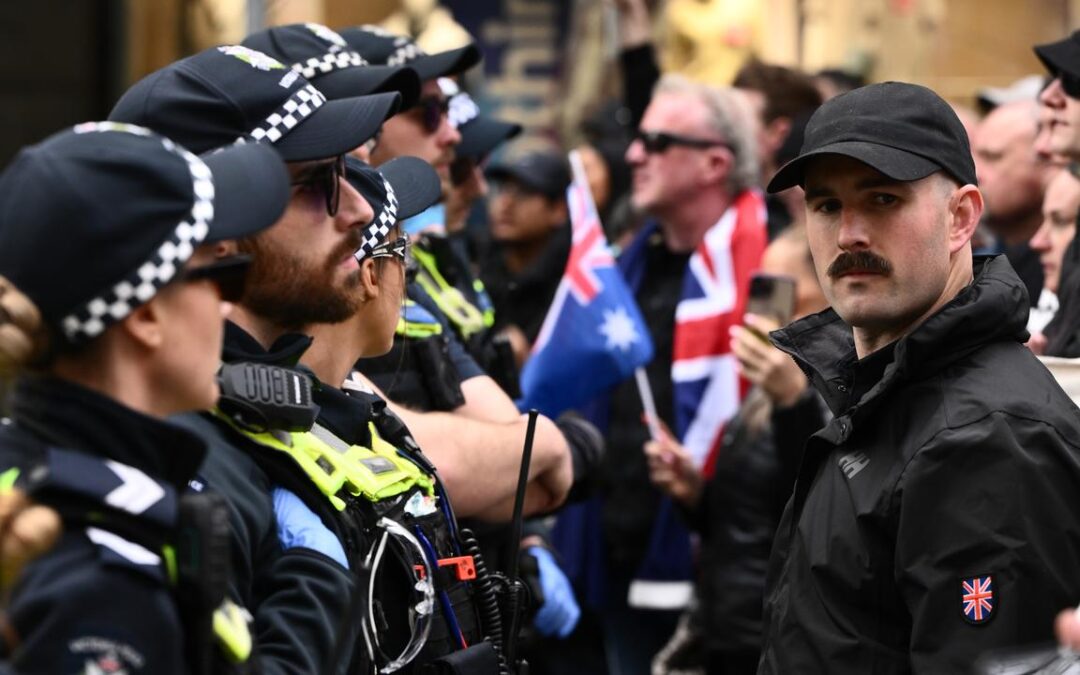
Far-right threat exposed by anti-immigration rallies
Australia has been urged to take the threat of far-right extremism seriously after nationalists marched alongside neo-Nazis at anti-immigration rallies.
Tens of thousands of people, dozens of dogs and at least one horse draped in Australian flags and paraphernalia joined the March For Australia rallies on Sunday in major cities including Sydney, Melbourne, Adelaide, Brisbane and Canberra.
Though the protests were widely condemned as racist and a “neo-Nazi con” across the political spectrum, politicians such as independent MP Bob Katter and One Nation senator Pauline Hanson spoke at some events.
Prime Minister Anthony Albanese maintained “diversity is a strength in modern Australia”.
“(It) provides us with incredible economic opportunity due to the diaspora and our connections with every country on the planet,” he told parliament on Monday.
But the Greens accused members of both major parties of paving the ideological path to the weekend’s rallies.
“Labor and Liberals for years have punched down on migrants and refugees,” Deputy Greens leader Mehreen Faruqi told the Senate.
“I do hope that this is a wake-up call for all of you to change course and do something about far-right extremism, which you have been ignoring.”
The minor party’s senators pointed to a Labor bill that would allow hundreds of former immigration detainees to be deported to Nauru, which the coalition has indicated it would support.
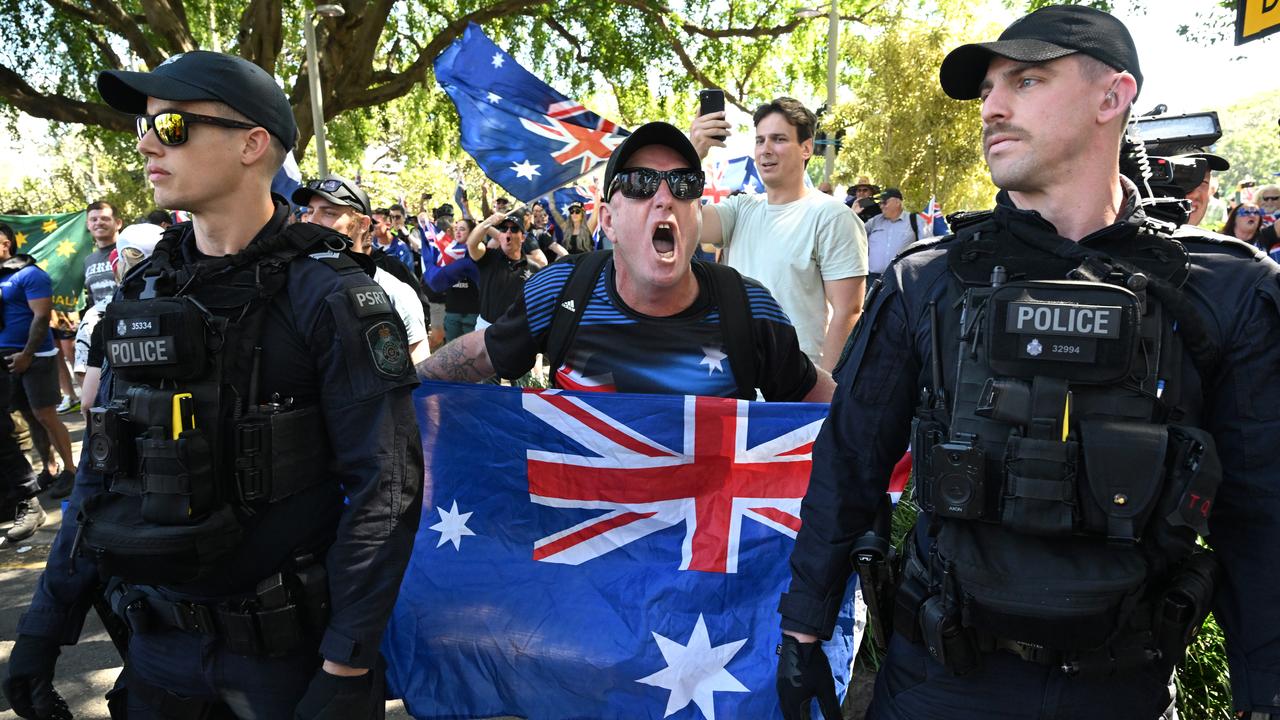
Prominent neo-Nazis gave speeches in Melbourne and Sydney, where NSW Police estimated 15,000 people attended.
Speakers and attendees were at pains to state they were not against immigrants and wanted the federal government to pause or slow the pace of immigration.
But in Sydney, one speaker sprouted a theory about “a clear global agenda to shame, beat down and replace people with Anglo-Celtic and European heritage”.
Multicultural Affairs Minister Anne Aly said people had legitimate concerns around the strains immigration was placing on housing and infrastructure.
The protests were clearly targeted at migrants from “countries that have brown people”, not white Western countries, Ms Aly said.
“It’s very clear from the conduct that was observed … that these marches were a con by the far right neo-Nazis to prey on some legitimate concerns around housing and around cost of living in order to propagate their anti-immigration, racist agenda,” she told ABC Radio on Monday.
“One of the very clear calls to action that was listed there was anti-Indian immigration.
“Now that, to me, is clearly racist when you target a specific ethnicity.”
Opposition Leader Sussan Ley claimed the weekend’s rallies were “attended by people of goodwill but hijacked by neo-Nazis spouting hate”.
“That can never be accepted,” she said.
There was some diversity of views within the coalition, with senator Jacinta Nampijinpa Price congratulating those who marched.
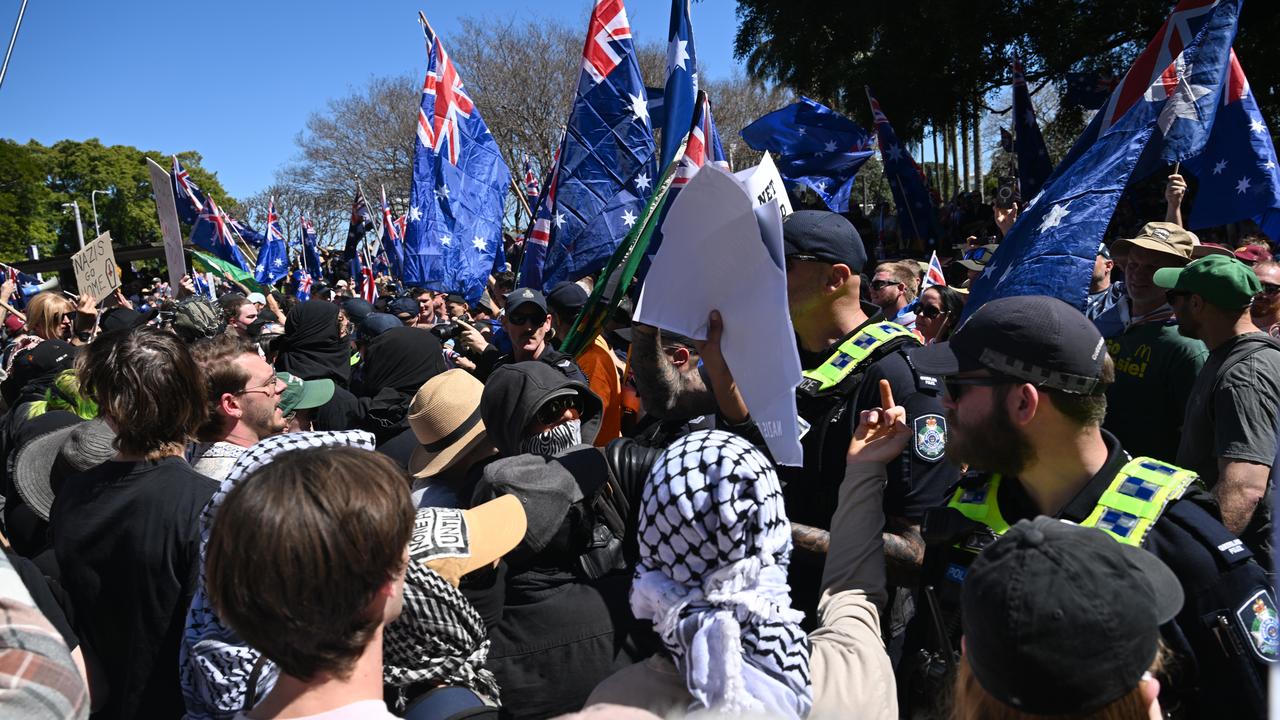
Before the protests, organisers frequently repeated a claim that 1500 migrants were entering Australia each day, based on Australian Bureau of Statistics overseas arrivals and departures data.
But the bureau has said the figures are not a reliable measure of migration or population change but rather represent self-declared traveller intentions.
Former Immigration Department deputy secretary Abul Rizvi said successive governments had failed to communicate their immigration plans to the public, leaving a void to be filled by conspiracy theories and “bizarre ideas”.
The crowd was generally well-behaved in Sydney, except for two men who were charged after an officer was assaulted during a brawl at a pub on the march route.
It was a different story in Melbourne, where violence erupted between anti-immigration marchers and anti-fascist and pro-Palestine protesters.
More than 100 Canberran counter-protesters chanted “f**k off Nazis, f**k off”, “go home white trash” and “immigrants are welcome here”.
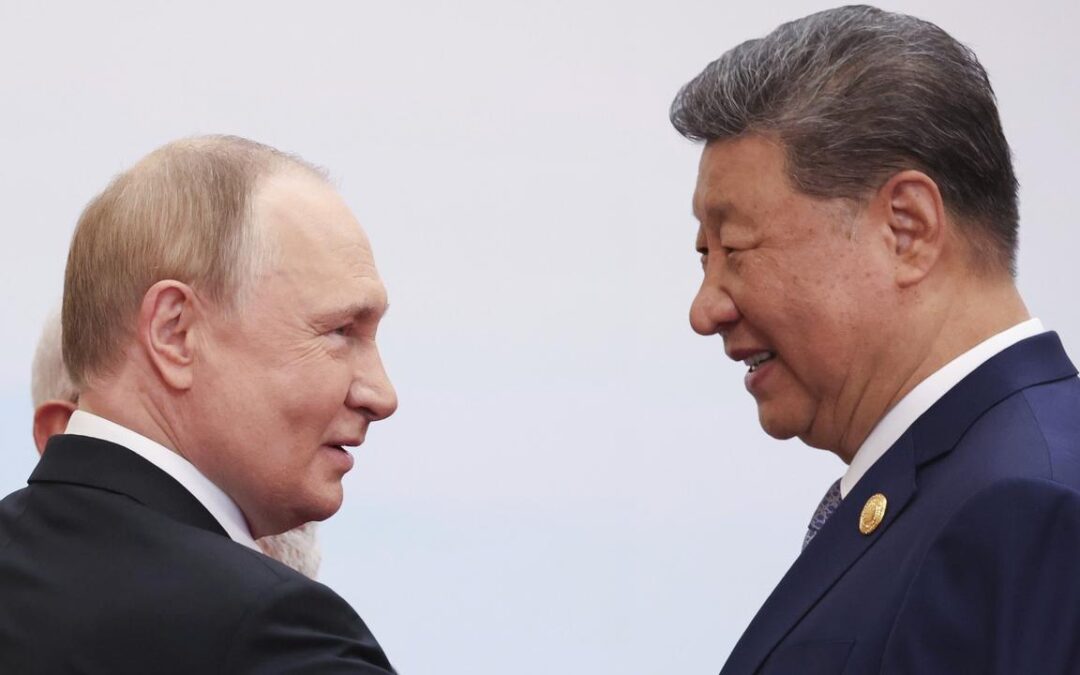
Xi, Putin share vision for new global order at forum
Chinese President Xi Jinping has urged leaders at a regional summit to leverage their “mega-scale market”, while Russian President Vladimir Putin showed support for Xi’s ambition for a new global security and economic order that poses a challenge to the US.
The Shanghai Cooperation Organisation (SCO) has set a model for a new type of international relations, Xi said in opening remarks addressing more than 20 world leaders at a two-day summit held in northern China’s port city Tianjin.
“We should advocate for equal and orderly multipolarisation of the world, inclusive economic globalisation and promote the construction of a more just and equitable global governance system,” he said.
“We must take advantage of the mega-scale market … to improve the level of trade and investment facilitation,” said Xi, urging the bloc to boost co-operation in fields including energy, infrastructure, science and technology, and artificial intelligence.
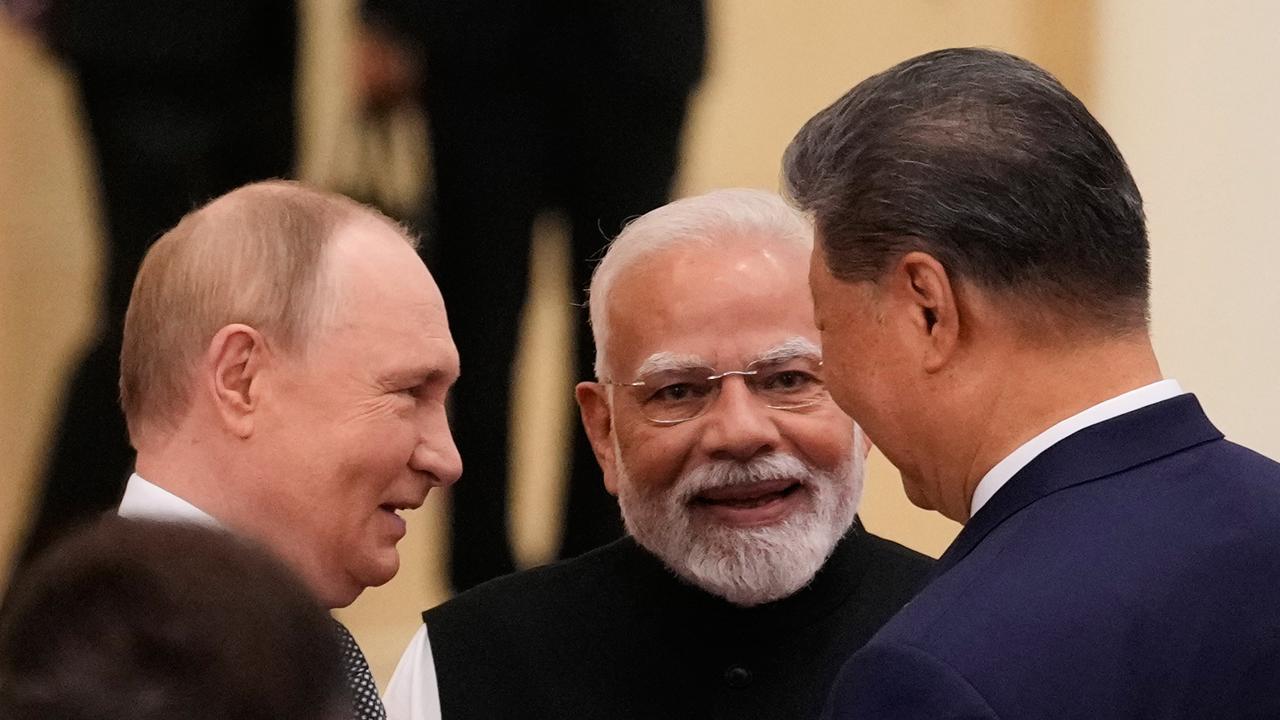
Putin said the grouping has revived “genuine multilateralism” with national currencies increasingly used in mutual settlements.
“This, in turn, lays the political and socio-economic groundwork for the formation of a new system of stability and security in Eurasia,” he said on Monday.
“This security system, unlike Euro-centric and Euro-Atlantic models, would genuinely consider the interests of a broad range of countries, be truly balanced, and would not allow one country to ensure its own security at the expense of others.”
Indian Prime Minister Narendra Modi and other leaders from Central Asia, the Middle East, South Asia and Southeast Asia attended the opening ceremony in a major show of Global South solidarity.
The security-focused bloc, which began as a group of six Eurasian nations, has expanded to 10 permanent members and 16 dialogue and observer countries in recent years.
Xi called on organisation partners to “oppose Cold War mentality and bloc confrontation” and to support multilateral trade systems.
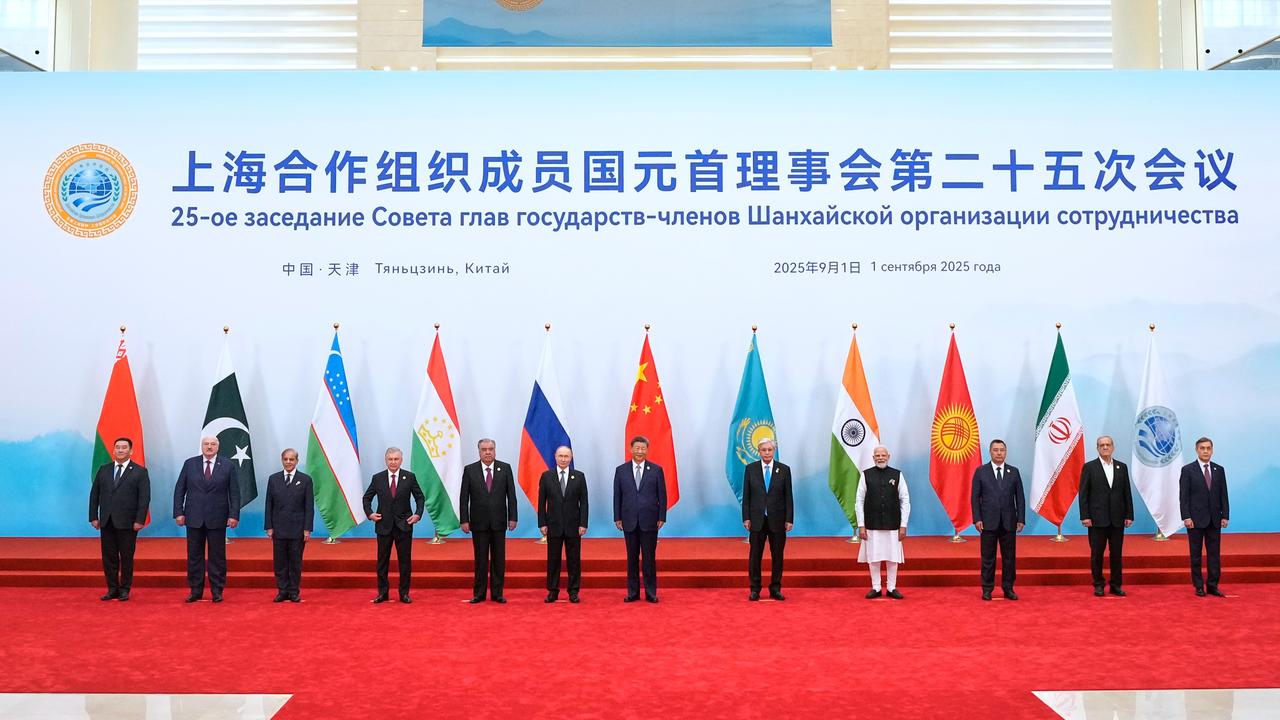
That was an apparent dig at US President Donald Trump’s tariff war which has disproportionately affected developing economies such as India, whose exports were hit with a 50 per cent levy last week.
China will provide 2 billion yuan ($A428 million) of free aid to member states in 2025 and a further 10 billion yuan ($A2.1 billion) of loans to an SCO banking consortium, he added.
Speaking on the sidelines of the meeting on Sunday, United Nations Secretary-General Antonio Guterres said China played a “fundamental” role in upholding global multilateralism.
Beijing has also used the summit as an opportunity to mend ties with New Delhi.
Modi, who is in China on his first visit in seven years, and Xi both agreed on Sunday their countries are development partners, not rivals, and discussed ways to improve trade ties amid the global tariff uncertainty.